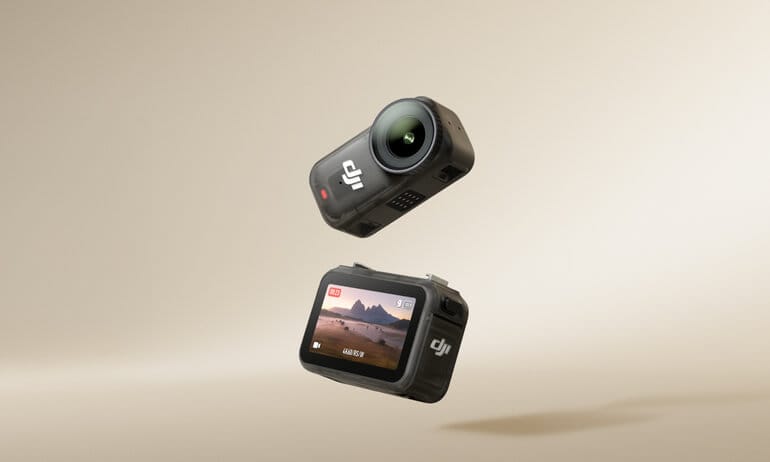DJI has entered the mini action camera market with its new Osmo Nano, a tiny 52-gram wearable camera that directly challenges Insta360’s popular Go Ultra and Go 3S models. This magnetic, two-piece design combines a small camera with a detachable screen dock to create a versatile system for everyday recording.
The Osmo Nano camera features a 1/1.3-inch sensor—the same size found in DJI’s flagship Action 5 Pro and matching the Insta360 Go Ultra. This larger sensor delivers better low-light performance than smaller alternatives while capturing 4K video at up to 60 frames per second, with slow-motion capabilities reaching 4K at 120fps.
Initially, DJI spokesperson Daisy Kong stated: “The Osmo Nano will not be available officially in the U.S. market upon its global launch on September 23.” However, the camera is now available through US retailers like Amazon, with next-day delivery for Prime members.
The camera alone is waterproof down to 10 meters without requiring additional housing, making it suitable for swimming and water sports. The Vision Dock, however, offers only IPX4 splash resistance, protecting it from rain and minor water exposure but not submersion.
More posts
Battery life varies significantly depending on settings. DJI claims up to 200 minutes of recording at 1080p/24fps when using both the camera and dock together. However, real-world testing shows more practical numbers: about 35 minutes when recording at 4K/60fps with the camera alone, extending to 49 minutes in the power-saving “Endurance Mode.” Users should note that recording at 4K with frame rates of 50fps or higher can cause thermal shutdowns after approximately 20 minutes of continuous use.
Storage options set the Osmo Nano apart from competitors. Unlike the Insta360 Go Ultra (which relies solely on microSD cards), the DJI camera includes built-in storage of either 64GB or 128GB. The 64GB model transfers files at up to 400MB/s, while the 128GB version reaches 600MB/s when connected via the included USB-C cable. The Vision Dock also adds a microSD slot for additional storage.
US pricing is $299 for the 64GB model and $329 for the 128GB version. In other regions, the camera costs €279 in the EU and £239 in the UK for the 64GB model, while the 128GB version is priced at €309 and £259 respectively. Australian pricing is AU$529 for the 64GB and AU$589 for the 128GB model. These prices undercut the Insta360 Go Ultra, which costs around €429 without built-in storage.
The Osmo Nano includes several professional features like 10-bit D-Log M color recording for greater dynamic range (up to 13.5 stops) and RockSteady 3.0 stabilization. However, stabilization struggles in low light conditions due to slower shutter speeds, sometimes creating blur and pixelation during quick movements.
One convenience drawback compared to Insta360’s design: switching between forward-facing and selfie views requires physically detaching and reattaching the dock, rather than simply flipping a screen.
Audio options include two built-in microphones and compatibility with DJI’s wireless microphone systems through OsmoAudio direct connection. This allows pairing with two microphone transmitters without needing a receiver—useful for interviews or multi-person activities.
The Osmo Nano introduces unique control features, including gesture controls that start recording when the user nods their head or gently taps the camera. A “SuperNight” mode enhances low-light recording, though it works best with minimal movement to prevent blur.
While DJI’s hardware impresses, reviewers note that its Mimo smartphone app falls short of Insta360’s editing software, which offers more creative tools and AI-powered effects. This software gap may matter to creators who rely on quick mobile editing.
Each Osmo Nano package includes the camera, Vision Dock, magnetic hat clip, magnetic lanyard, protective case, USB-C cable, and a magnetic ball-joint adapter mount. DJI Care Refresh protection plans are available separately to cover accidental damage.







